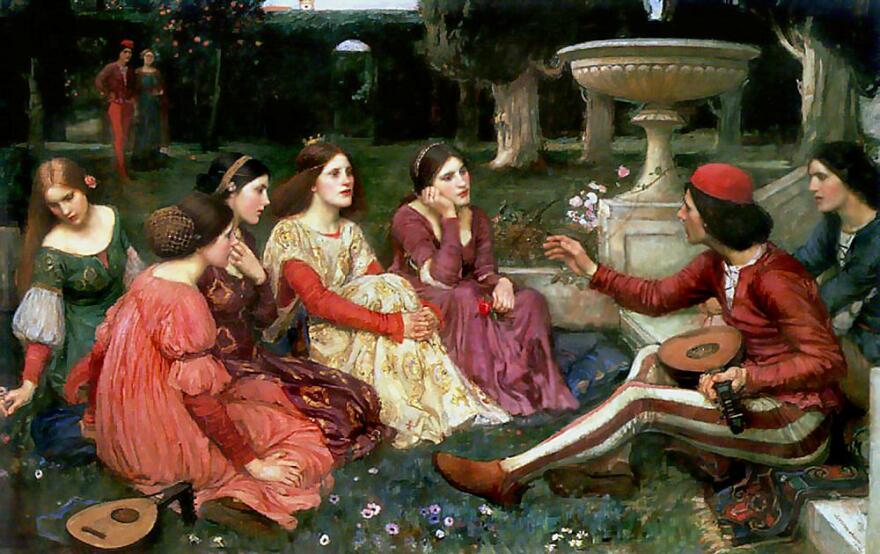When a plague swept 14th-century Florence, killing more than half the city’s population, wealthy Italians turned to social distancing. One small group’s retreat from a stricken city to a deserted villa became the backdrop for the classic novel “The Decameron.”
That novel is just one of the texts Rebecca Messbarger teaches in her Disease, Madness and Death Italian Style course at Washington University. But it has sudden resonance, she says — and relevance she never anticipated when she began teaching it a year ago.
“I never imagined it would be so pertinent to our day-to-day living, and to all of our personal lives,” she told St. Louis on the Air listeners Wednesday. A co-founder of the university’s Medical Humanities program, Messbarger is also a professor of Italian. “This is a complete surprise, and not a great surprise.”
Listen:
The novel’s author, Giovanni Boccaccio, personally experienced the plague that decimated Florence in 1348. In the book, he deals with many topics of relevance to readers today, Messbarger said, including the alienation that comes with distancing and the concept of fortune.
But it’s not the only book in her course that feels on-point for those grappling with the impact of the coronavirus now terrorizing Europe and grinding the American economy to a halt. She also recommended “The Betrothed,” by Alessandro Manzoni.

“Frankly, Italian literature — all literature — grapples with these themes,” Messbarger explained. “These are themes that are fundamental to human beings: illness and mental illness and care. They’re all things that every single one of us will have to grapple with in our lifetimes. … They’re ample material, and in the Italian context, it’s very rich.”
Two other texts Messbarger recommends are Daniel Defoe's "A Journal of the Plague Year" and Geraldine Brooks' "A Year of Wonder."
Social distancing was also at the root of St. Louis health commissioner Dr. Max Starkloff’s approach to the 1918 influenza pandemic. St. Louis had one of the lowest influenza rates of cities of its size. Of the 31,500 who got sick in St. Louis, 1,703 died. Historians have credited Starkloff’s response.
“St. Louis on the Air” brings you the stories of St. Louis and the people who live, work and create in our region. The show is hosted by Sarah Fenske and produced by Alex Heuer, Emily Woodbury, Evie Hemphill, Lara Hamdan and Joshua Phelps. The engineer is Aaron Doerr, and production assistance is provided by Charlie McDonald.
Send questions and comments about this story to feedback@stlpublicradio.org.



